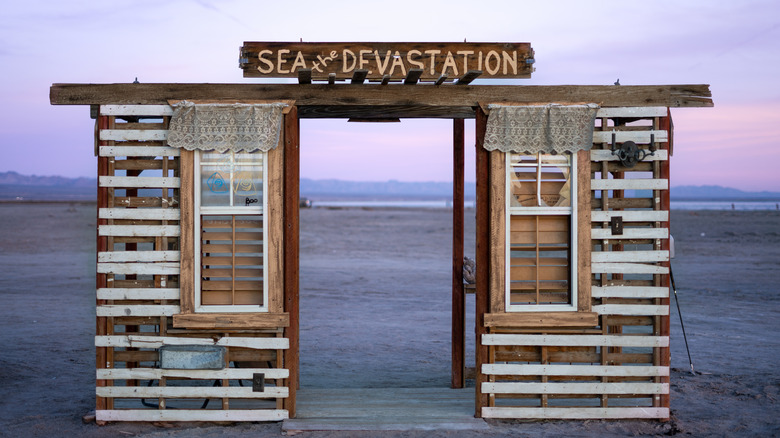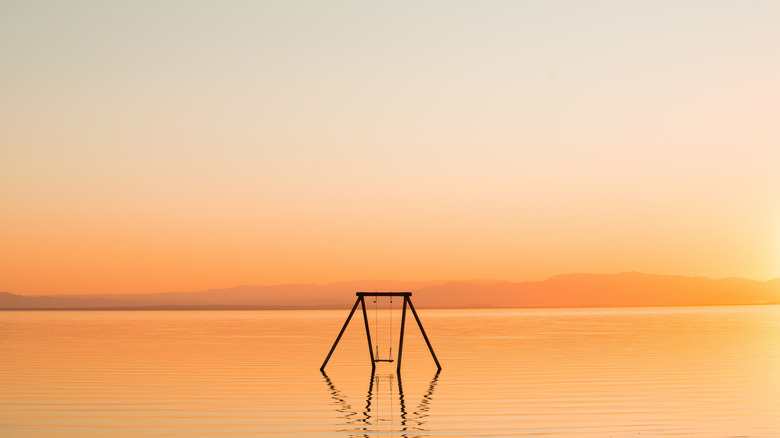The Salton Sea, often referred to as California’s largest lake, is actually a sea. Nestled just south of the famous Joshua Tree National Park, this unique body of water provides visitors with a serene and distinctive camping experience. Those who venture to the area can enjoy a range of outdoor activities such as kayaking, birdwatching, and hiking. The remote location of the Salton Sea ensures that campers can enjoy these experiences without the usual crowds found in more popular camping spots.
Campsites and Facilities
Located on the northeastern shore of the Salton Sea, the Salton Sea State Recreation Area (SRA) offers 1,600 campsites spread across five different campgrounds. Two of these, Varner Harbor and Mecca Beach, are considered developed, providing sites for both RV and tent camping. Some of these sites come with full hookups, while others require dry camping, which has become increasingly popular among RV enthusiasts. The other three campgrounds—Corvina, Salt Creek, and Bombay Beach—are more primitive, offering tent camping sites along the shoreline.
Best Time to Visit
Due to the extreme summer heat, which can reach up to 115 degrees Fahrenheit, June through September is typically considered the off-season. During the peak season, from October to May, the temperatures are more comfortable, ranging from 50 to 70 degrees. It’s essential to be well-prepared with all necessary gear and supplies, as the SRA is quite isolated and located far from any stores.
A Unique Natural History

What makes the Salton Sea so unique is its accidental creation in 1905. During a severe flooding event, an irrigation canal was compromised, allowing the waters of the Colorado River to flow into the Salton Basin, one of the lowest points on Earth. For nearly two years, the basin was filled with water, creating what is now known as the Salton Sea.
In the following decades, the Salton Sea became a hub for commercial fishing and recreational activities. However, due to insufficient freshwater inflow and high evaporation rates, the salinity levels rose beyond what the fish could tolerate. This led to the decline of the fishing industry and a decrease in tourism, leaving many areas around the sea in a state of abandonment.
Despite this, the Salton Sea remains a must-visit destination for those interested in unique natural features and historical oddities. Its natural beauty and outdoor recreation opportunities make it a worthwhile trip for any adventurer.
Activities to Enjoy

Camping by the Salton Sea offers a variety of activities. Visitors can witness breathtaking sunsets or explore nearby attractions such as the Bombay Beach Ruins, Bombay Beach Drive-In, and Salvation Mountain. The sea itself provides opportunities for beachcombing, hiking along the shore, and limited fishing for tilapia.
Swimming is not recommended due to the high salinity, farm runoff, and algae blooms. However, kayaking, canoeing, and boating are allowed, though campers should be aware of potential hazards like sandstorms and windstorms.
Birdwatching is one of the most popular activities. With over 400 documented species in the Salton Basin, the area is a prime spot for birders. The Salton Sea SRA and the Sonny Bono Salton Sea National Wildlife Refuge offer excellent opportunities for observation. Birders may want to bring a field guide, such as “Sibley Birds West: Field Guide to the Birds of Western North America,” to help identify the various species they encounter.



